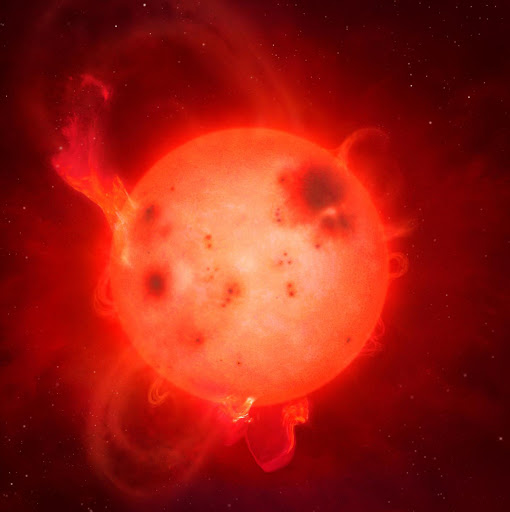Astronomers from the OGLE and KMTN teams dealing with the search for the phenomena of gravitational microlensing report the discovery of a small planet that traverses the interstellar space alone.
Planets in Solar system
There are eight planets in the solar system. Come back, we currently know eight planets in the solar system. It used to be nine, but in 2006, astronomers concluded that Pluto was not worthy of the name. So there are eight planets. Come back. I mean, there may be more, but the ninth, despite many clues, has not yet been found, although there is hope that such a planet is somewhere. So summing up: in the Solar System, eight objects are currently considered planets. Well.
Extrasolar planets
For a quarter of a century, astronomers have also successfully discovered planets orbiting other stars, the so-called exoplanets or, if you prefer, extrasolar planets. At first the search was tedious and difficult, but the technology has developed over time and now we are discovering the planets in bunches. Currently, the number of known and confirmed exoplanets orbiting other stars has already exceeded 4,000. In the coming years, there will only be more planets, and it can be assumed that the pace of their discovery will also increase. After all, a lot remains to be discovered. Researchers estimate that there may be several hundred billion planets in our galaxy, so we have some more to discover.
–
Do the planets have to revolve around any stars?
Well, not at all. By analyzing various planetary systems, astronomers have already observed planets that are heading towards destruction by falling towards their stars, or planets that have been destroyed in collisions with other massive objects as a result of gravitational interactions with other planets. So can’t there be planets which, as a result of such interactions, have been simply – ugly speaking – dug out of their planetary systems and wandering alone in interstellar space? Of course.
Such objects are usually called solitary planets (a bit sad) or free planets (better). The fundamental problem with such planets is that they are very hard to find. Planets do not emit any light by themselves, so they are dark. Free planets do not pass in front of their host star, causing its brightness to fall, so we cannot count on transit. So how do you find them?
This is where the phenomenon of gravitational microlensing comes in handy. Well, when viewed from the perspective of an observer on Earth, such a completely invisible, dark, distant, small planet may occasionally pass right in front of some distant star. The planet’s gravity can literally bend the rays traveling towards an observer from a distant star for a moment and lead to a brief increase in the brightness of such a star in the sky. In other words, a planet free for a moment acts like the lens of a magnifying glass.
Two teams worldwide are looking for such flashes: Optical Gravitational Lensing Experiment (OGLE) and Korean Microlensing Telescope Network (KMTN).
Researchers from both teams have just announced the discovery of a small free planet. Considering the fact that the phenomenon of gravitational lensing itself does not give us much information about the discovered object, we do not know how far it is from us.
The results of the observations were presented in a scientific article published on the scientific preprints portal arxiv.org. The main author of the article is Przemek Mróz, assistant professor at the California Institute of Technology (Caltech).
As noted by the authors of the discovery, low-mass objects, on the order of 0.3-1 of the mass of the Earth, are most often ejected from a planetary system. Such small objects, even if they cause the phenomenon of microlensing, are extremely small and short. It may only take up to a few hours for the brightness to increase.
The newest planet discovered in this way – according to all signs in heaven and earth – has led to the shortest microlensing phenomenon ever recorded anywhere in the world.
The planet OGLE-2016-BLG-1928 caused the phenomenon of microlensing lasting only 41.5 minutes. As you can rightly guess, scientists did not have much time to collect any detailed data about this object.
So far, only four such small free planets have been discovered. However, a sample of five objects of this type indicates that there could be billions of such objects in the Milky Way.
Lonely or just distanced?
However, due to limited data, researchers cannot say with certainty that this planet is not orbiting a star. Certainly, no star is within 8 AU (1 AU = 1 AU is about 150 million km, the average distance of the Earth from the Sun). However, it cannot be said that it is definitely not a planet that orbits farther from its star.

–
Or is it just a flare on a star?
Researchers rightly point out that the problem is also a star whose light has been amplified by the planet. It is a red giant, and there are occasional strong flares on the surface of such stars. However, after prolonged analysis, the astronomers found that the event properties such as length and brightness did not match that of typical flares.
Anyway – as the authors conclude – this event is one of the best candidates for the discovery of a free planet with the mass of Earth. Don’t let this association confuse you, however – on the surface of a free planet, there is no point in looking for life, so maybe we should focus on extrasolar planets orbiting some stars for now? Probably everyone has their own answer to this question.
–


